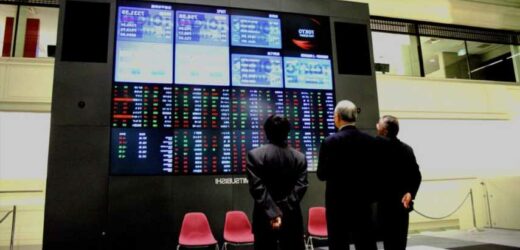Knowing how former investors experienced disasters can aid current investors in avoiding them in the future. These are some of the most prominent instances of firms defrauding their investors throughout history. Some of these instances are genuinely remarkable. Consider them from the shareholder’s standpoint. Regrettably, the shareholders had no means of determining what was really going on because they were duped into investing. Here are the 8 biggest stock market scams of all time.
8 ZZZZ Best (1986) – $4 Million
The company’s owner, Barry Minkow, predicted that it would replace General Motors as the “General Motors of carpet cleaning” in the 1980s. Minkow seemed to be establishing a multimillion-dollar firm, but he was actually committing fraud and theft. He forged more than 20,000 documents and sales invoices without arousing any suspicion.
Minkow spent more than $4 million to lease and remodel a San Diego office space, despite the fact that his business was a deception aimed to deceive auditors and investors. In December of 1986, ZZZZ Best went public and eventually had a market valuation of more than $200 million. Barry Minkow was only a teenager at the time, which is astounding. He was given a 25-year prison term.
RELATED: Buying Stocks For The First Time: 10 Rookie Mistakes To Avoid
7 Centennial Technologies (1996) – $40 Million
In December 1996, Centennial Technologies’ CEO, Emanuel Pinez, and his management team documented that PC memory cards generated $2 million in sales for the company. In reality, the company shipped fruit baskets to consumers. The staff then fabricated paperwork as proof that sales were being recorded. The share price of Centennial surged 451% to $55.50 on the New York Stock Exchange.
As per the Securities and Exchange Commission (SEC), Centennial misrepresented its earnings by approximately $40 million between April 1994 and December 1996. Surprisingly, the corporation recorded a profit of $12 million when it had actually lost over $28 million. The share price fell below $3.
6 Tyco International (2002) – $170 Million
Tyco’s leadership promised that 2002 would be the best time for investing in stocks. Before the controversy, Tyco, a manufacturer of electronic components, health care, and safety equipment, was considered a secure blue chip investment. During his tenure as CEO, Dennis Kozlowski, one of the top 25 corporate executives, embezzled vast sums of money from Tyco through unauthorized loans and fake stock transactions.
Kozlowski, together with CFO Mark Swartz and CLO Mark Belnick, obtained $170 million in loans with little or no interest without shareholder consent. According to reports, Kozlowski and Belnick orchestrated the sale of 7,5 million shares of unlawful Tyco stock for $430 million. Typically, these funds were smuggled out of the corporation disguised as executive incentives or perks.
5 Bre-X Minerals (1997) – $215 Million
This Canadian firm participated in one of the greatest stock frauds in history. It was stated that its Indonesian gold property contained more than 200 million ounces of gold, making it the world’s richest gold mine. Bre-stock X’s price surged to $280 (split-adjusted), turning ordinary individuals into billionaires overnight. Bre-X had a market capitalization of $4.4 billion at its peak.
The celebration ended on March 19, 1997, when the gold mine was shown to be bogus, and the stock price promptly plummeted to pennies. Quebec’s public sector pension fund lost $70 million, Ontario’s Teachers’ Pension Plan Board lost $100 million, and Ontario’s Municipal Employees’ Retirement Board lost $45 million.
RELATED: The Richest Living Members Of Rothschild Family, Ranked By Net Worth
4 Enron (2001) – $500 Million
Prior to this scandal, Enron, a Houston-based energy trading corporation, was the seventh-largest company in the United States based on revenue. Enron was able to conceal $500 million in debt through a series of complex accounting procedures involving the employment of shell corporations.
Investors and analysts were deceived into believing the corporation was more fundamentally stable than it actually was. This practice gave the appearance of astronomical earnings. Finally, the intricate web of lies unfolded, and the share price plummeted from over $90 to around 30 cents. Arthur Andersen, the fifth largest accounting firm in the world at the time, fell along with Enron.
3 HealthSouth (2003) – $2.7 Billion
In the late 1990s, HealthSouth’s CEO and founder Richard Scrushy began encouraging workers to exaggerate sales and gross profit. At the time, the corporation was one of the major providers of healthcare services in the United States, enjoying fast expansion and acquiring a number of other healthcare-related companies.
Scrushy apparently sold HealthSouth shares worth $75 million prior to announcing a loss in profitability in late 2002, which was the first indication of danger. A law firm determined that the transaction was unrelated to the loss, and investors should really have heeded the warning. In March of 2003, the SEC announced that HealthSouth overstated its sales by $2.7 billion, igniting the scandal.
2 WorldCom (2002) – $3.8 Billion
Shortly after the fall of Enron, the stock market was shaken by another accounting fraud involving billions of dollars. After yet another case of major “book fiddling,” the telecommunications titan WorldCom came under heavy scrutiny. WorldCom’s operating expenses were classified as investments. Evidently, the corporation viewed office pens, pencils, and paper as an investment in the company’s future. This practice was done to scam investors.
Normal operating expenses of $3.8 billion, which should have all been recognized as expenses for the financial year in which they were incurred, were instead considered investments and recorded over a number of years. This small accounting technique significantly inflated profits for the year in which the expenses were incurred. WorldCom claimed profits of almost $1.3 billion in 2001. In truth, the company’s operations were growing increasingly unprofitable.
1 Bernard Madoff (2008) – $50 Billion
Bernard Madoff, the former chairman of the Nasdaq and creator of the market-making firm Bernard L. Madoff Investment Securities, was arrested on December 11, 2008, for orchestrating a large Ponzi scheme. He was turned in by his two sons. The then-70-year-old hedge fund manager concealed his losses by compensating early investors with funds raised by others. Every year for the past 15 years, this fund has regularly gained 11%.
The constant returns were attributed to the fund’s alleged strategy, which consisted of employing option collars designed to reduce volatility. This scheme defrauded around $50 billion from investors. He was given a sentence of 150 years in prison. Madoff passed away in prison on April 14, 2021, at age 82.
READ NEXT: The Hermès Story: How The Dumas Family Became One Of The Wealthiest Families In The World
Sources: Investopedia, MoneyWeek, The New York Times
Source: Read Full Article


